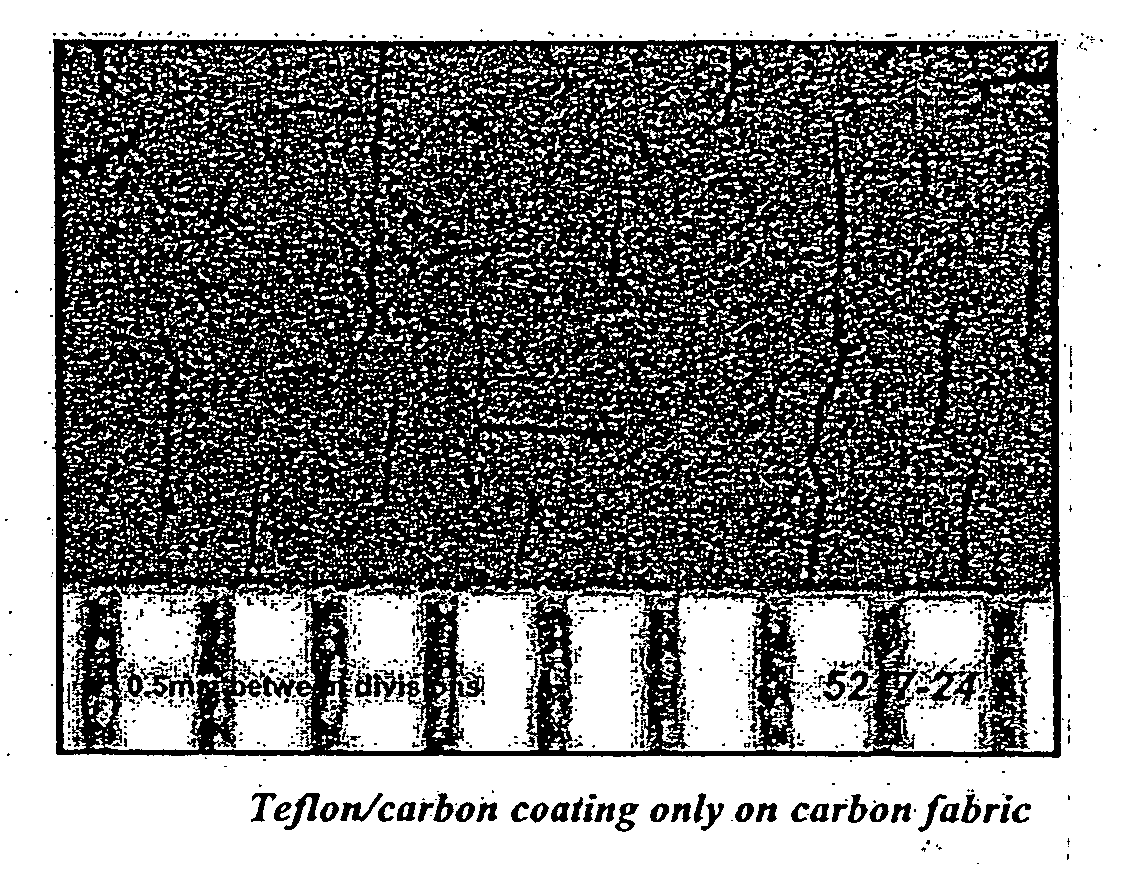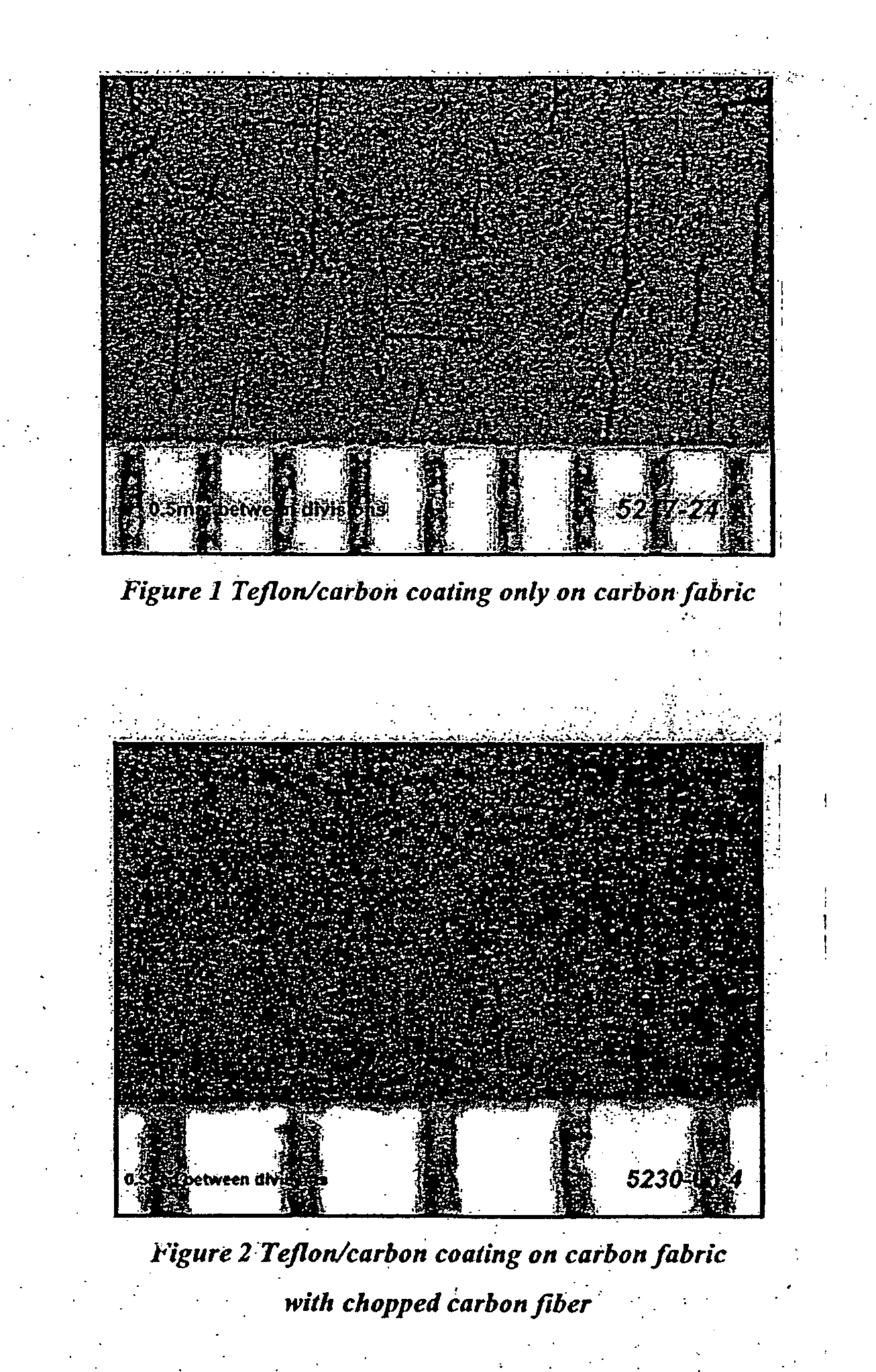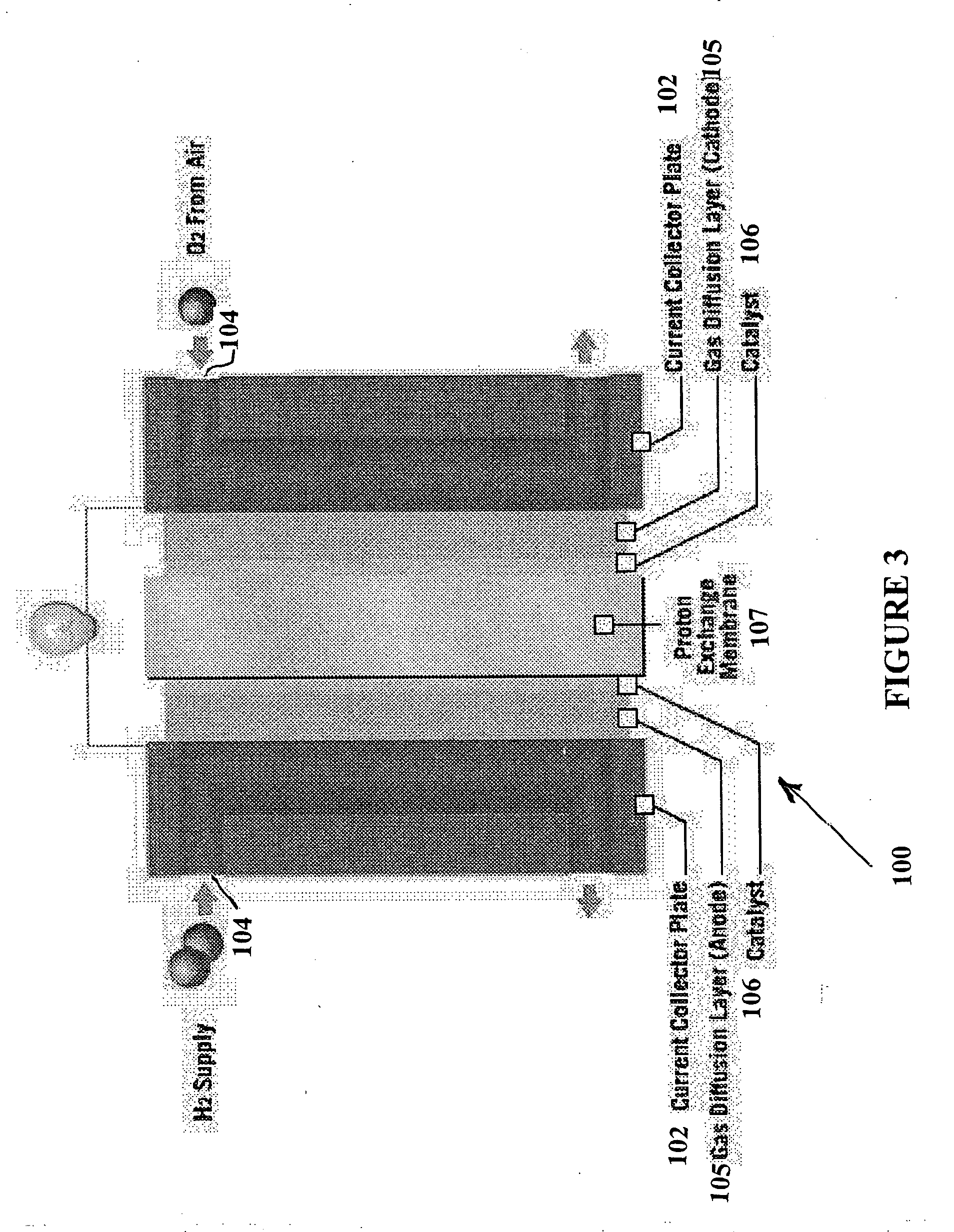Control of carbon coating microcrackings in fabrication of fuel cell GDL electrode layer(s)
a technology of carbon coating and electrode layer, which is applied in the direction of non-metal conductors, cell components, conductors, etc., can solve the problems of low adhesiveness to the substrate, frequent cracking of the coating on the surface of the gdl, and exposed bare substrate, etc., to achieve the effect of minimizing cracking
- Summary
- Abstract
- Description
- Claims
- Application Information
AI Technical Summary
Benefits of technology
Problems solved by technology
Method used
Image
Examples
Embodiment Construction
[0013] In the present invention, an aqueous dispersion is applied as a coating to the substrate of a GDL of a battery or fuel cell (such as a methanol type fuel cell). The dispersion may include carbon black, fluoropolymers, and either carbon or graphite particulates, which also may include a surfactant. The ratio of fluoropolymer to carbon black may fall within the range of 5 / 95 to 70 / 30 by weight. The particulates may comprise 25% to 70% of the total coating weight. The addition of these particulates allows for a greater structural integrity as well as increasing the dispersion solid loading without increasing the viscosity. As a result, the present coating minimizes cracking in the coating layer of the GDL.
[0014] Carbon black is a black, amorphous, carbon pigment produced by the thermal decomposition of natural hydrocarbons. Generally, there are three different types of carbon black (i.e., furnace, channel, and lamp black). The nominal purity of it is roughly equivalent to 98.5%...
PUM
| Property | Measurement | Unit |
|---|---|---|
| size | aaaaa | aaaaa |
| size | aaaaa | aaaaa |
| diameter | aaaaa | aaaaa |
Abstract
Description
Claims
Application Information
 Login to View More
Login to View More - R&D
- Intellectual Property
- Life Sciences
- Materials
- Tech Scout
- Unparalleled Data Quality
- Higher Quality Content
- 60% Fewer Hallucinations
Browse by: Latest US Patents, China's latest patents, Technical Efficacy Thesaurus, Application Domain, Technology Topic, Popular Technical Reports.
© 2025 PatSnap. All rights reserved.Legal|Privacy policy|Modern Slavery Act Transparency Statement|Sitemap|About US| Contact US: help@patsnap.com



